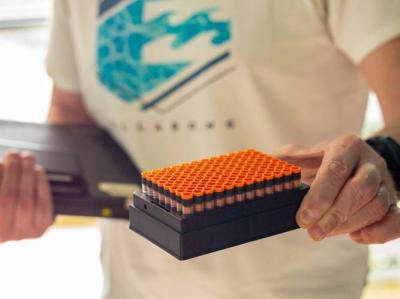The World Health Organization (WHO) has expressed hope that China's research on the origins of COVID-19 will remain "scientific and transparent," as global deaths due to the coronavirus approach 4.5 million. Dr. Maria Van Kerkhove, the WHO's technical lead for COVID-19, stated that "China cannot delay studies related to the origins of COVID-19, as there are many qualified scientists in research centers who can conduct them without delay." Kerkhove emphasized the necessity of continuing such studies, wanting the origins work to remain scientific, transparent, and urgent.
This statement comes as Chen Xu, China's permanent representative to the UN in Geneva, sent a letter to the WHO calling for investigations of American biological laboratories as part of the inquiry into the origins of the pandemic. Chen Xu remarked in his letter: "If someone insists that the lab leak case is still open, then laboratories such as Fort Detrick and the University of North Carolina should be investigated openly."
The senior Chinese diplomat considered the hypothesis of the virus leaking from the Wuhan Institute unlikely. However, if someone believes that COVID-19 was artificially created, American laboratories should also be examined. The Global Times noted that this formal request is the first from China to the WHO through diplomatic channels and accompanied Chen's letter to WHO Director-General Tedros Adhanom Ghebreyesus with a petition signed by 25 million Chinese internet users.
The Chinese newspaper also explained that the Walter Reed Army Institute of Research is located at Fort Detrick in Maryland, managed by the Pentagon, and conducts biomedical research, including on infectious diseases. It mentioned that there is collaboration between the Fort Detrick laboratory and a team led by epidemiologist Ralph Baric from the University of North Carolina, indicating that their published joint research results show that by 2003, these research centers in the U.S. had advanced techniques for constructing and modifying coronaviruses.
A joint report by the WHO and China released in March, following a WHO mission to Wuhan in 2021, concluded that "it is highly unlikely that the virus was leaked from a laboratory." The report stated that the most probable scenario for the emergence of COVID-19 is transmission from bats to another animal that then infected humans.
Representatives of the Chinese authorities have previously called for investigating narratives about the coronavirus leaking from the American military lab at Fort Detrick and similar institutions in other countries. WHO emergency coordinator Mike Ryan expressed his discontent with Chen's statement, highlighting the contradiction between considering a lab incident unlikely while simultaneously proposing investigations into American laboratories. Ryan stated in a press conference in Geneva, "I find this difficult to understand."
Concurrently, independent experts have indicated the urgency of taking action in tracing the origins of the coronavirus in China. These experts were part of the first investigation commissioned by the WHO, which traveled to China earlier this year. Eleven scientists wrote in the scientific journal Nature that this investigation was supposed to be the first step in a process that has now stalled. They called for the investigation to continue, stating that "the window of opportunity for conducting this critical inquiry is rapidly closing; any delay will make some studies biologically impossible."
COVID-19 has caused the deaths of 4,461,431 people globally since the WHO office in China reported the emergence of the illness at the end of December 2019. At least 213,795,270 people have been confirmed infected with the virus since its emergence. The vast majority of those infected have recovered, although some continue to experience symptoms weeks or even months later.
The figures are based on daily reports from health authorities in each country and exclude subsequent revisions by statistical agencies that suggest much higher death counts. The WHO considers that, accounting for excess mortality directly or indirectly associated with COVID-19, the toll of the pandemic could be two to three times higher than the officially reported count. A significant proportion of less severe or asymptomatic cases remain undetected despite increased testing in many countries.




